
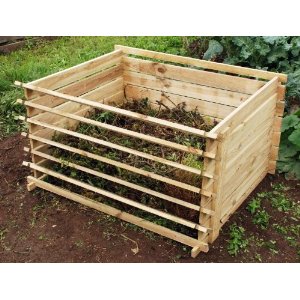
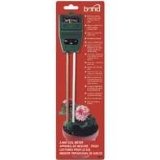
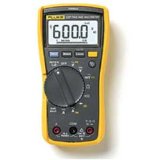

Search This Site
Search With Google
Compost Moisture Meter
Thirsty Light Garden Moisture Meters
Sometimes when you go out shopping you just happen to come across something that really appeals due to its simplicity and novelty. Plant novelty moisture meter
Moisture Meter Guide
The complete moisture meter website
Compost is the result of organic matter decomposing. Such organic matter includes amongst other things, garden waste, manure, leaves, kitchen scraps and grass clippings. Composting is the term applied to making compost and there are quite a few methods of composting. But no matter which method is used, all organic matter will decompose eventually, whether it requires assistance from us or not.
Compost is a soil conditioner and should not be confused as a fertilizer. Unlike fertilizers, compost is not high in essential nutrients for the soil. But organic matter is a very valuable soil amendment addative because it will improve the structure of soil, helps with any necessary
Moisture Meter Guide 2010 Contact details:garnett65@hotmail.com
The Orchid Moisture Meter
The orchid belongs to a widespread and very diverse family of flowering plants which have fragrant and colourful blooms. Orchids can be found in pretty much every habitat. Orchid growing
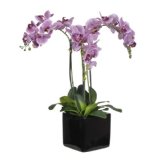
Firewood Moisture Meter
The Stihl moisture meter can be used to detect and give a moisture reading level in firewood. This is important if you have a log burning fire or stove. It is essential that you only burn well seasoned wood. As well as being able to detect the moisture levels in firewood the Stihl moisture meter can be used on both paper and cardboard as well.
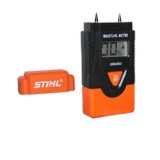
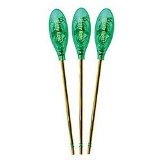
Hydroponic Moisture Meter
Hydroponics is a way of growing plants in water, using mineral nutrient solutions and no soil. Terrestrial plants can be grown using such mediums as gravel, mineral wool, expanded clay and rock wool. Hydroponic gardening
Lawn Roller
In the quest for the perfect lawn the gardener requires certain gardening tools to assist him or her. Rollers
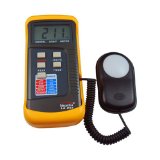
Petrol Strimmer
So if you are in the market for buying a petrol strimmer you can either sit in the comfort of your own home and browse the internet until you find what you are looking for Strimmers
Lawn Scarifier
When choosing from the vast array of lawn scarifiers available to you, the size of your lawn and the budget available to you to invest will be deciding factors. Scarifiers
Petrol Chainsaw
The petrol chainsaw is a mechanical hand held saw. It can be powered by either petrol or diesel. Chainsaws
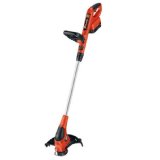
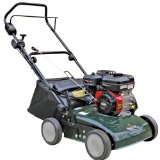
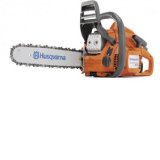
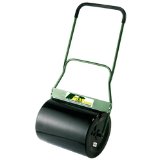
microbial activity, will attract such insects and earthworms that add benefit to soil and will assist in supressing diseases that are soil born.
As said earlier, there are many methods for making compost and one cant really say if one or another is the best method. Compost is compost and all organic matter will decompose. What can be confidently said is that you can never add too much compost to your soil.
Rapitest Compost Moisture Meter
It is important when making good compost to insure that your compost has adequate
moisture content. You cannot test for moisture content levels properly by sight and
touch, so this rapitest moisture meter is an ideal addition to your gardening tool
portfoilio. Not expensive to buy and very easy to operate, this compost moisture
meter will give you almost instant results once the elongated probe is inserted in
to your compost. With a scale of 1 -
To use this Rapitest compost moisture meter insert the elongated stem in to your compost pile. As you do this you will notice the needle on the display becoming very active and jumping all over the place. Leave the probe of the meter in your compost until the needle settles down and comes to rest. The final resting place will be the moisture condition of your compost.
As well as measuring moisture content levels you should also measure the temperature within your compost pile. You can do this with a garden thermometer which pretty much takes on the same appearance as this moisture meter. Temperature also plays an important role in the production of good compost. Decomposition is more effective and quicker with temperatures between 110 F and 160 F.
A properly constructed compost pile will reach these temperatures within 2 weeks and your compost pile will begin to settle down. This will indicate to you that all is going well on the decomposing front and you have a successful pile. You can now use this pile and distribute it to your soil or decide to keep it as the nucleus of your compost pile and simply add more organic matter to give you a continual pile throughout the growing season. If you do add more organic matter you must turn your pile and add more water as you do so. The more you add to the pile the more frequently you must turn and water whilst also monitoring the temperature.
Within compositing piles there are different types of bacteria that work depending upon the temperature of the pile.
Psychrophilic bacteria work in the lowest temperature range and are most active at 55 F. When working they give off a little heat compared to other bacterias, but this heat is still enough to help build your pile temperature up and attract mesophilic bacteria.
Mesophilic bacteria can decompose organic matter rapidly and produce carbon dioxide,
acids and heat. They work best between 70 -
Thermophilic bacteria thrive in the temperature range 113 -
How To Make Compost
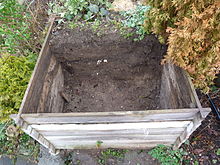
A compost heap can be built by yourself or chosen from a vast range of specially designed and manufactured purpose bins to suit all sizes of gardens. If making your own compost bin you can simply hammer 4 posts in to the ground forming an enclosed area of about 1 square metre. Flatten the soil within the area of the posts with the back of a spade to consolidate it. Then tack some wire netting to the posts to form the bin. Make sure you leave the front side open so you can easily get in and out of the compost bin. If you do not want to use wire netting to form the structure of the bin you can nail planks to the posts instead.
To make the actual compost in your compost bin there are a couple of rules you need to follow. The best time to start a compost bin is in the springtime and to get the best possible compost you want to be looking at having a combination of soft, green nitrogen rich materials and dry carbon rich materials in a 50/50 combunation. One thing you do not want to do is let one particular material have dominance within the bin.
Woody materials should be placed at the bottom of you bin because they will help with air circulation and you want layers of different materials that are approximately 30 cm deep. For those larger items you add to your bin, it will help greatly with the decomposing if you shred them firat before adding. If any waster you add to the bin is very dry you should moisten the pile by spraying a little water on to it without over soaking it. You can check the moisture content levels of the pile using your garden moisture meter.
Once you have made your initial pile you should keep adding to it in regular intervals
until the bin is reasonably full. Once full the compost will begin to heat up as
decomposition takes place and the bacterias begin to work. A couple of weeks later
the compost will begin to cool down and this is the time you should turn it over
with a fork and mix everything up again and add water if necessary. Repeating this
process at regular intervals will result in you having ready compost after about
2-
A compost heap that is not attended to and contains large items which are not shredded can take over a year to decompose properly and will have halved in size with a compost that has an earthy smell to it. If you want compost quickly you can create a hot compost heap by introducing nitrogen and moisture to it, whilst turning it over regularly to introduce air circulation.
What To Compost
What Not To Compost
diseased plants
meat and fish
dairy cooked food
coal ash
cat and dog litter
disposable nappies
perennial weeds
Green, nitrogen rich material
grass cuttings
soft prunings
annual plant and weed remains before they have set seed
fruit and vegetable scraps
old cut flowers
tea bags and coffee grounds
Brown, carbon-
cardboard (torn up)
newspaper
paper bags and scrunched up paper
straw
| Tramex Moisture Encounter Plus |
| Tramex Compact Wood Moisture Meter |
| Tramex Concrete Encounter Moisture Meter |
| Tramex Skipper Plus Moisture Meter |
| Tramex Roof And Wall Moisture Scanner |
| Sonin Digital Moisture Meter model 50218 |
| Sonin Digital Moisture Meter 270 model 50270 |
| Sonin Moisture Test Tool model 50210 |
| Sonin Moisture Test Meter Model 50211 |
| Oak |
| Douglas Fir |
| Beech Tree |
| Elm Tree |
| Hickory Tree |
| Maple Tree |
| Pine Tree |
| Prevent And Repair Gaps In Wooden Floorboards |
| How To Fix A Squeaky Hardwood Floor |
| How To Repair A Hardwood Floor That Has Buckled |
| Which Is The Best Firewood? |
| Concrete |
| Concrete Moisture |
| Screed Moisture Meter |
| SDS Drill |
| Belle Cement Mixer |
| SDS Drill Advice |
| Which SDS Drill |
| SDS Drill Accessories |
| Drilling Into Concrete |
| Kennedy Tool Box |
| Moisture - Basic Facts |
| Types Of Damp |
| Wet Rot |
| Dry Rot |
| Mold |
| Water Leak Detection |
| Stucco Moisture |
| Water Damage |
| Moisture And Rust |
| Moisture Damage To A Chimney |
| Wallpaper Stripper |
| Plaster Mixer |
| Why Worry About Moisture Problems |
| Does Your Home Have A Moisture Problem? |
| How To Solve Moisture Problems |
| How To Use Anti Mold Paint |
| Rising Damp |
| Condensation |
| Salt Damp |
| How To Avoid Bathroom Condensation |
| How To Remove Black Mold |
| How To Prevent Bathroom Mold |
| Soldering Kit |
| Soldering Kit Contents |
| Soldering Kit Advice |
| Bonsai Tree Classification |
| Growing Bonsai From Seed |
| Bonsai Tree Care |
| Bonsai Tree Training |
| Bonsai Tools |
| Displaying Bonsai |
| Bonsai Calendar |
| Bonsai Plants |
| The Thirsty Light Curve Moisture Meter |
| The Thirsty Light Ladybird Moisture Meter |
| The Thirsty Light Bumble Bee Moisture Meter |
| The Thirsty Light Butterfly Moisture Meter |
| Hanna Instruments |
| Agratronix Portable Coffee Moisture Tester |
| Lawn Aerator |
| Lawn Roller |
| Lawn Rake |
| Lawn Sand |
| Chainshot |
| Chainsaw Gloves |
| Chainsaw Trousers |
| Chainsaw Boots |
| Mac 4 - 20 XT Chainsaw |
| Mac 738 Chainsaw |
| Mac 842 Chainsaw |
| Mac 20X Power Chainsaw |
| Einhell BG-PC 3735 Chainsaw |
| Einhell BG-PC 4040 Chainsaw |
| Einhell BG-PC 5045 Chainsaw |
| Poulan P3314 Chainsaw |
| Poulan P4018 Chainsaw |
| Poulan Pro PP3816AV Chainsaw |
| Poulan Pro PP4218AVX Chainsaw |
| Poulan Pro PP4620AVX Chainsaw |
| Efco MT 4100 SP Chainsaw |
| Efco MT 3500 Chainsaw |
| Efco 132 S Chainsaw |
| Efco 147 Chainsaw |
| Efco 152 Chainsaw |
| Efco MT 7200 Chainsaw |
| Efco MT 8200 Chainsaw |
| Efco MT 3750 Chainsaw |
| Methods Of Obtaining Soil Moisture Levels |
| Hygrometer |
| Psychrometer |
| Rain Gauge |
| Wave Ventilation System |
| Humidity |
| Hygrometer For Keeping Reptiles |
| Humidor |
| Weather Stations |
| Musical Instrument Storage |